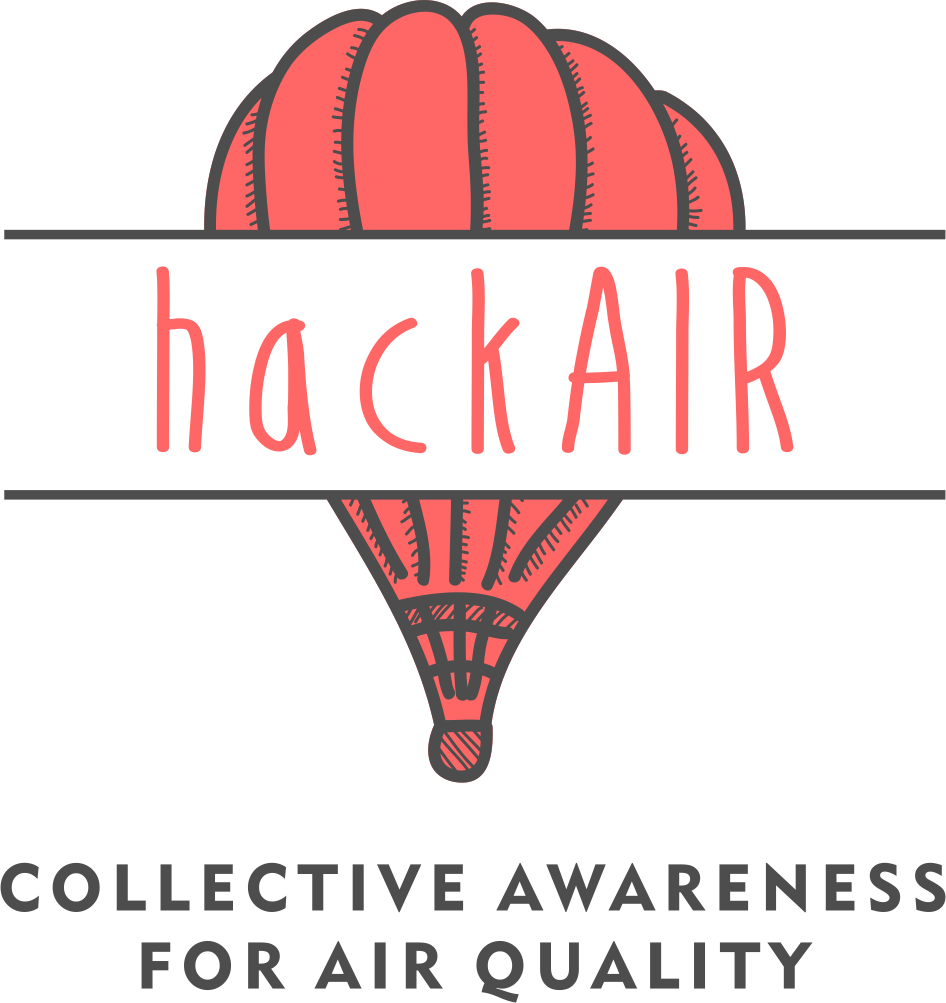Elements of the hackAIR platform
hackAIR’s open technology platform for citizen observatories on air quality combines multiple data sources to allow citizens to access, collect and improve information about air pollution levels where they live. The hackAIR partnership is currently hard at work developing the platform. Here is a sneak preview at the core models of the system.
Air quality data sources
The hackAIR ecosystem allows citizens to collect air quality information from three sources: digital images, a low-tech filter setup and an open hardware sensor.
Image analysisPhotos of the sky can be used to estimate air pollution for a particular location. For hackAIR, we are taking advantage of public, geo-tagged images posted to online platforms such as Flickr. In addition, users of the hackAIR platform will be able to upload their own pictures of the sky directly to the system. |
Low-tech air quality estimation moduleAir quality estimates do not necessarily require complicated electronics. Using filters and air pumps, you can build a simple measurement setup to catch particulate matter in a paper filter. Compared with a clean filter, you’ll see the difference with your naked eye. If you snap a picture of the filter with your phone, the hackAIR app provides you with a more accurate air quality score. |
Open hardware sensorsAnyone can learn to build a functional air quality sensor, using widely available electronic components like the Arduino microcontroller. As part of its toolkit, hackAIR will provide instructions (and code) to build a sensor compatible with the hackAIR platform. Sensor data can be uploaded to hackAIR. |
Discovery and indexing
In addition, hackAIR collects PM2.5 and PM10 measurements from environmental websites and stores this information in a repository that allows time and geo-specific queries. The system is based on a) focused crawling that use machine learning techniques, and b) query formulation and expansion based on domain-specific terms. Then, text mining is applied to the sites discovered and the measurements, time/date and geolocation are extracted.
Air quality data processing
To make sense of the air quality data collected, hackAIR applies image analysis, data fusion and personalisation filters:
Image filtering and analysisThe module processes an image and detects whether it depicts sky or not. If an image doesn’t depict sy, the module discards it from further analysis. Otherwise, it also produces a “mask” that designates the area of the image that corresponds to the sky. This module employs Deep Convolutional Neural Networks (DCNN) to extract an abstract image representation that it then uses to classify an image as “containing sky” or “not containing sky” based on a supervised learning scheme. Then, it applies a similar type of analysis within the sky images to pinpoint the location of the sky in the image. |
Air quality mapping using data fusionAir quality is usually only measured at a few locations. Therefore, a person interested in knowing about the local air quality might not have observations nearby. To solve this issue, we create continuous maps of air quality for an entire region by using an air quality model in combination with the observations. We use geostatistics to combine point-based observations of air quality with spatially exhaustive output from a chemical transport model or a statistical air quality model. |
Decision support and personalisationThe module involves an ontological framework and a knowledge base that will store content relations, user profile data, and environmental fused data related to the user query. Reasoning techniques will be applied on these data to provide users with recommendations. This module involves the common representation of heterogeneous information including user profile and needs, and the related environmental data in order to provide personalised and decision support services. |
Air quality data access
Users of hackAIR will be able to access the resulting data and air quality maps using
- a customisable web application; and
- a mobile app.
APIs will be available for fetching information from the database.
The first version of the hackAIR platform will be available for Germany and Norway in Summer 2017.



